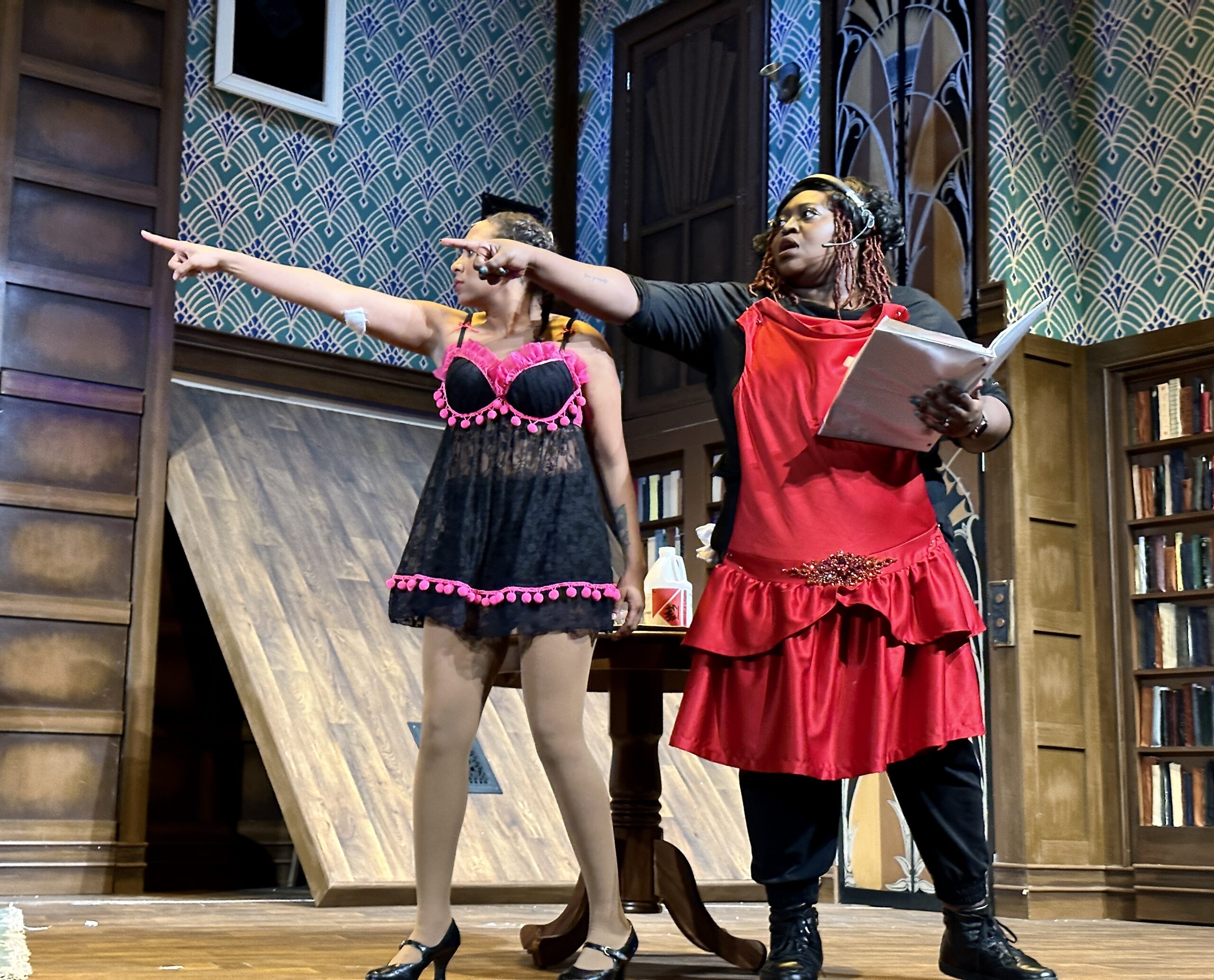The holidays are often a time for nostalgia — reminiscing fondly, gathering around the tree with mugs of hot cocoa and binging seasonal classics. There’s a transporting quality to these sorts of traditions, especially in the charming period pieces that take us back to simpler times. In that spirit, Stagedoor Theatre is going full pastiche with It’s a Wonderful Life: A Live Radio Play, running through December 17. The production is equal parts a tribute to the Jimmy Stewart classic and a total re-imagining of the story.
Written by Joe Landry, the pseudo-adaptation tells the same story as the original, even preserving much of its original dialogue. However, it’s staged in the style of a 1940s radio play, with a cast of actors gathering at a radio station to perform an audio-only version. The audience is privy to all the technical craftsmanship required to make this happen, watching the actors switch between character voices and race across the stage to assist the foley artist in providing all the sound effects. It’s a peek behind the curtain of how a radio play is made, as well as an auditory recreation of the original film.
Landry has given similar treatment to other classics, including A Christmas Carol and War of the Worlds, to quite positive feedback, and It’s a Wonderful Life: A Live Radio Play received strong media reviews upon its debut. Furthermore, Landry’s work provides complex, creative challenges to theaters across the nation: What does it look like to stage something that is an auditory experience? How do you draw audiences to the sonic storytelling that drives radio plays while keeping them invested in the very real actors on stage? How do you merge two mediums when one is auditory and the other is visual and kinesthetic?

These are the questions on director Candy McLellan’s mind as the cast and crew prepare for opening night. According to McLellan, one of the most challenging parts of staging a live radio play is figuring out what the world of the production looks like. What are the rules? When do the actors need to be in character, and when can they make sly glances at each other? What are they doing when they’re not in a scene? When are they in the town of Bedford Falls, and when are they in the recording studio? And how do you keep the play physically interesting when the actors are simply speaking into a microphone?
As director, McLellan drew on her recent experience performing in Aurora Theatre’s The Play that Goes Wrong, which similarly features a play-within-the-play. Much of the character work for McLellan and the rest of that cast involved figuring out when it was acceptable to break character. It’s a multilayered kind of acting — playing a character who’s also playing a character. McLellan is thankful to have that experience now, while directing this play, in which characters essentially had to be created from scratch.
You read that right — Landry’s script does not include any action or relationship between the studio actors, meaning it was up to McLellan and the cast to create those dynamics. While certainly a challenge, the director said it has been one of the more exciting and rewarding parts of the production.
Every creative mind on the project has been put to the test, with the actors not only coming up with their own behind-the-scenes stories to tell (solely through gestures and physicality) but also finding ways to differentiate all of the It’s a Wonderful Life characters they voice. The cast consists of only five actors who collectively voice every character from the film, and they have devised specific voices to distinguish their characters. At least one scene, McLellan noted, has a single actor voicing every character, which is so absolutely rife with comedic potential, one can almost laugh picturing it.
Another aspect of directing this production is making sure the actors are not adhering too closely to the movie. McLellan recalled several moments earlier in the process when cast members would come to rehearsal saying, “Well, this is how they did it in the movie” — until she reminded them they were creating an original performance. After all, the last thing anyone wants is the audience thinking they could simply go home and watch the movie. But given the uniqueness of this production, everyone is certain to remain tuned in and listening closely.
::
Luke Evans is an Atlanta-based writer, critic and dramaturg. He covers theater for ArtsATL and Broadway World Atlanta and has worked with theaters such as the Alliance, Actor’s Express, Out Front Theatre and Woodstock Arts. He’s a graduate of Oglethorpe University, where he earned his bachelor’s degree, and the University of Houston, where he earned his master’s.

